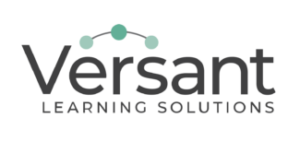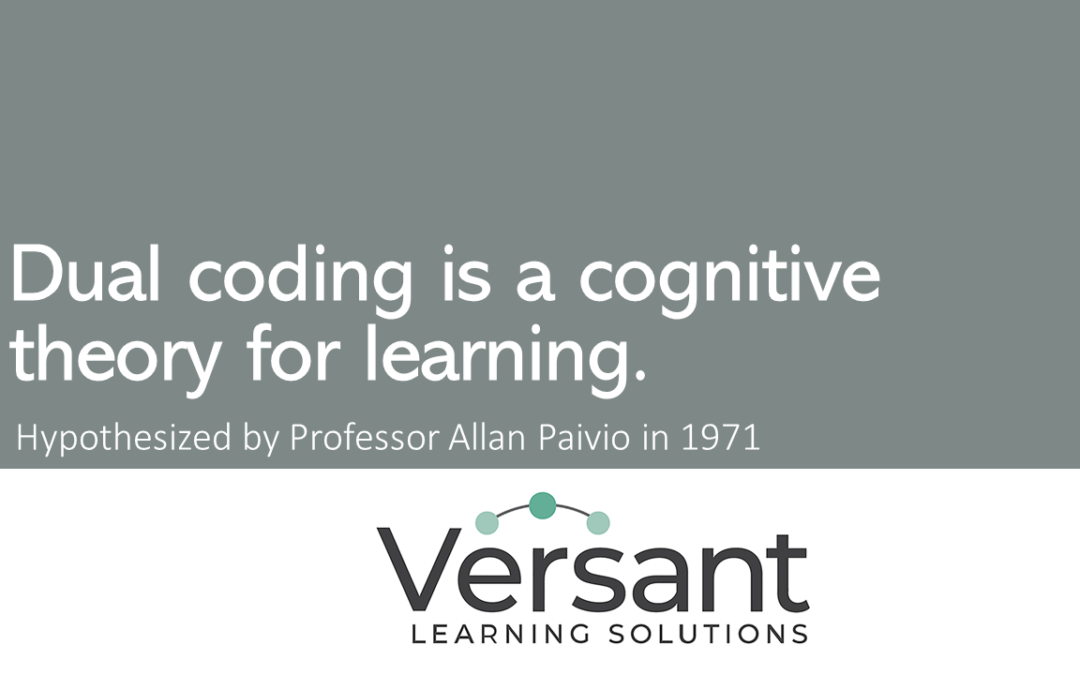Quick-Start Synopsis
Researchers of cognitive learning theory seek to better understand how the mind processes and stores information when they learn. It is part of the larger field of Learning Sciences is the interdisciplinary field that focuses on learning innovation and instructional methodologies. Over time, researchers developed multiple theories, and they fall into several buckets:
- Cognitivism
- Behaviorism
- Constructivism
- Humanism
- Connectivism
The three foundational learning theories are cognitivism, behaviorism, and constructivism. Each has a place when creating training. Learning theories provide frameworks for how people make sense of their world. The theories consider how we see the world, connect information, and how we store data in memory.
Become a Little More Conversant on the Topic
To make these buckets of theory more concrete, consider three different training professionals. today, Today, we will focus on Mehta Cogni. We will discuss Leah Sci and Conni Lincoln-Log later.
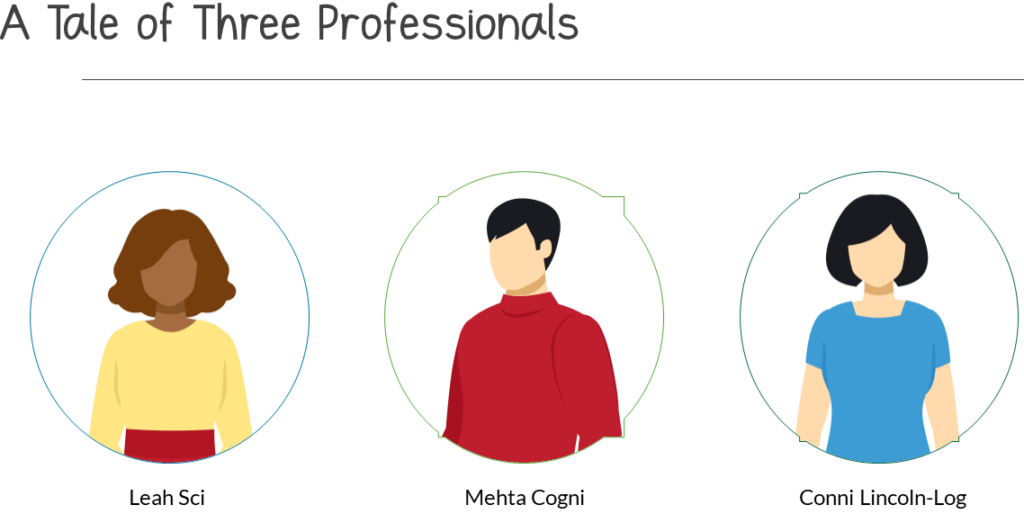
Mehta likes to understand how things work and spends time focusing on his mental processes. In focused moments, Mehta is concerned about his ability to “understand understanding.” What is happening in his mind as he learns new information and adds it to his memories?
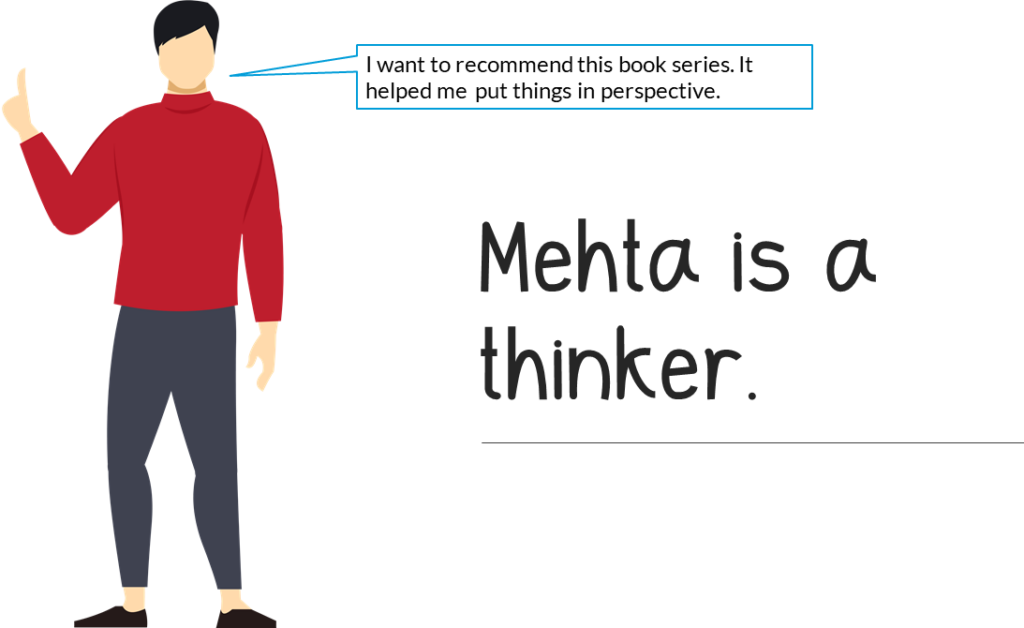
Mehta may recommend books, videos, and infographics to help learners find information of interest. When enjoying hobbies, he practices again and again – never growing impatient. Yoga and Tai Chi sequences are calming to Mehta and make sense as they build in complexity over time.
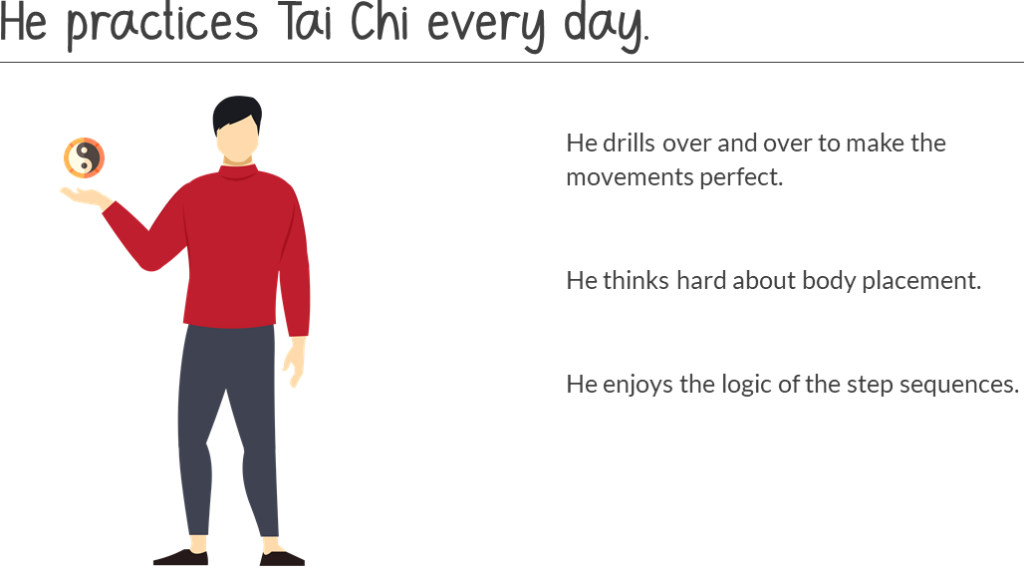
In training, Mehta likes to logically present information to his audience. Onboarding training, for example, would not focus on practicing behaviors, having conversations, or putting together physical models. Instead, his training would build a “case” on a subject. Mehta is a fan of flashcards and quizzes to evaluate retention.
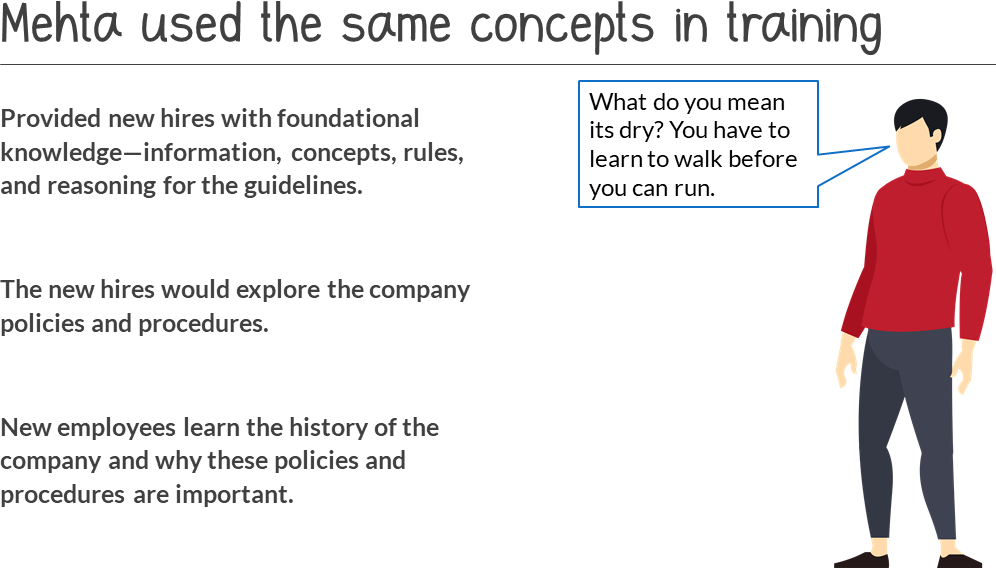
He thinks of training as an information processing system – putting in information and using queries to retrieve the information when required. Mehta considers what data the learner needs to appreciate new content, transfer it to memory, and access it in the future.
Mehta loves providing problems during training sessions for the participants to solve – individually.
If you were to consider Mehta’s actions, which of the three main learning theories does Mehta derive these practices?
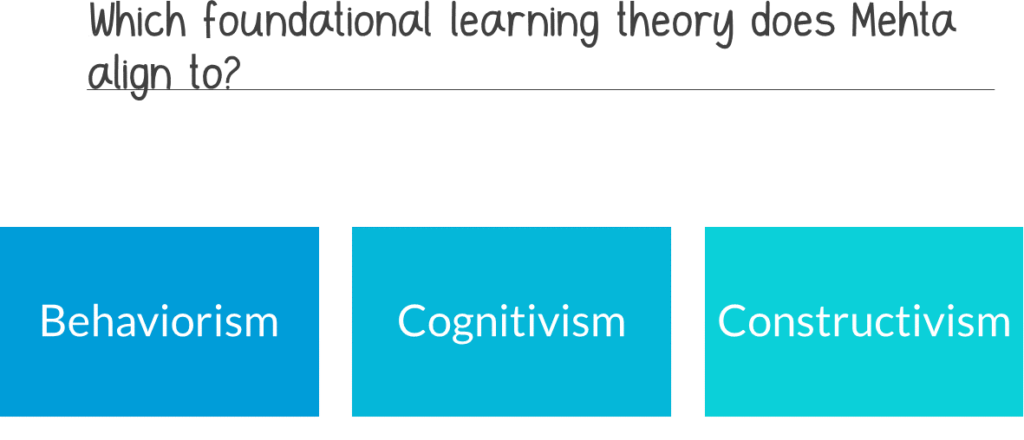
Mehta Cogni operates from a Cognitivism framework.
Dual coding is a cognitive theory of theory of learning that falls within Cognitivism. Studies in this arena initially looked at static images and audio and now include analysis of multimedia content. High and low-experience learners achieve better outcomes when multimedia synch visuals and audio transfer knowledge. Memory and understanding suffer when the asset separates narration and visuals.
What is a high-experience learner versus a low-experience learner? For example, in an oncology training module, the high-experience learner knows human anatomy or has completed laboratory experiences using oncolytic viruses in mice. In other words, they already have a body of knowledge to draw. Low-experience learners are coming into the training without deep understanding and prior experience – like for an oncology 101 course.
When training separates the data sources by time or space, the high-experience learner will overcome this challenge by calling on prior knowledge – but a low-experience learner will be at a disadvantage. Training developers should consider previous experience and contiguity when designing materials for audiences that may (or may not) have prior knowledge. However, it is always good practice to synchronize content channels, so they coincide.
Dual coding was hypothesized by the work of Dr. Allan Paivio. The body of knowledge includes evidence from psychological and cognitive neuroscience research. Like all theories, however, other researchers suggest alternative methods by which we store and process information.
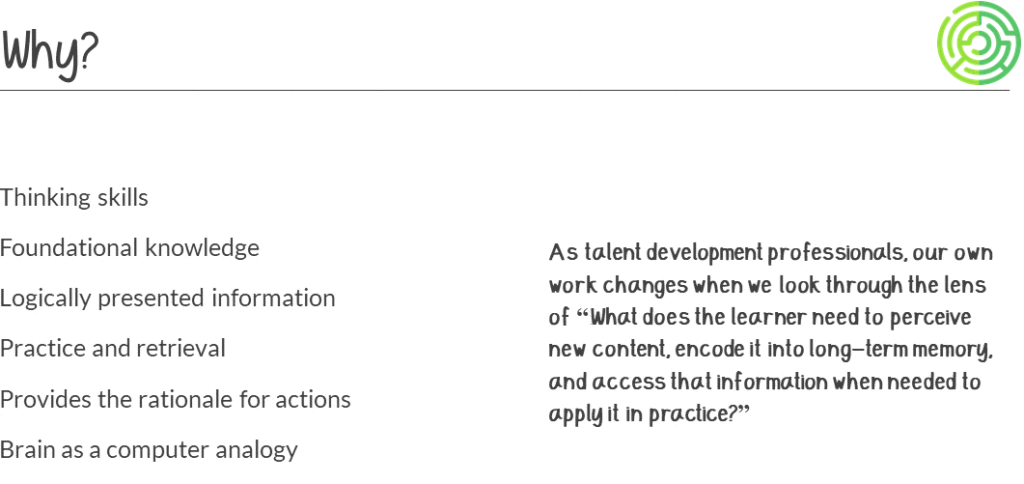
Cognitivism has several strengths:
- The theory treats learners as adults (which they are)
- Emphasizes foundational knowledge (ensuring core knowledge is well known by all on the team)
- Builds a base of information (layering information over time with additional training opportunities)
- Explains the rationale (which provides context for the adult learner)
- Focuses on the process of thinking (time for reflection and how the material relates to the job)
In onboarding, for example, the content would focus on core information, concepts, rules, and context for standard operating procedures (SOPs). New hires explore corporate policies and processes and consider why they are essential concerning the employee.
The structure of a scientific journal provides another example.
- Introduction – The introduction describes the current state of the field.
- Materials and Methods – The materials and methods explain what tools were used to test and evaluate questions.
- Results – The results section provides a stepwise discussion of the questions, how the questions were evaluated, and the outcomes. One experiment logically leads to the following evaluation.
- Discussion – Finally, the discussion takes all the various data points and considers how they contribute to the field of knowledge and move it forward.
NOTE: The characterization here is not based on a specific person but intended to help you remember the significant theme of the cognitivism theory of learning.
Proven Value for Medical Affairs
Providers of training to Medical Affairs teams should consider cognitive science or cognitive theorybecause it provides a framework for understanding how learners make sense of the world. The best learning theories are based on years of research and debate – just like evidence-based medicine. Medical Affairs stakeholders should have confidence that their trusted partners employ sound training techniques.
As Kurt Lewin, a pioneer in the field of organizational development, said, “Nothing is so practical as a good theory.”
That doesn’t mean that all learning theories stand up to critique – consider the fallacy of learning styles! So, although vendors and agencies may say the right things – dig deeper to ensure that the data supports their cause. In training and education, many plausible hypotheses fail when put to the test.
Contact Us to Develop Your Strategy
If you would like to discuss your team’s situation, please contact us.
References
- Association for Talent Development (ATD). Talent Development Book of Knowledge (TDBoK). January 2020 ed. Association for Talent Development; 2020.
- Paivio A. Mind and its evolution: A dual coding theoretical approach Mind and Its Evolution: a Dual Coding Theoretical Approach. 1-525. DOI: 10.4324/9781315785233
- Paivio A. Intelligence, dual coding theory, and the brain Intelligence. 47: 141-158. DOI: 10.1016/j.intell.2014.09.002
- Allen Urho Paivio (1925-2016). https://www.psychology.uwo.ca/people/faculty/remembrance/paivio-psynopsiswinter2017.pdf
- Clark, J.M. and A. Paivio, Dual Coding Theory and Education. Educational Psychology Review, 1991. 3(3): p. 149-210. https://nschwartz.yourweb.csuchico.edu/Clark%20&%20Paivio.pdf. Accessed 3.24.2021.
- Mayer, R.E. and V.K. Sims, For Whom Is a Picture Worth a Thousand Words? Extensions of a Dual-Coding Theory of Multimedia Learning. Journal of Educational Psychology, 1994. 86(3): p. 389-401. https://d1wqtxts1xzle7.cloudfront.net/42556320/For_Whom_Is_a_Picture_Worth_a_Thousand_W20160210-5344-79hv7v.pdf Accessed 3.24.2021.
- Wouters, P., Tabbers, H.K. & Paas, F. Interactivity in Video-based Models. Educ Psychol Rev 19, 327–342 (2007). https://doi.org/10.1007/s10648-007-9045-4
